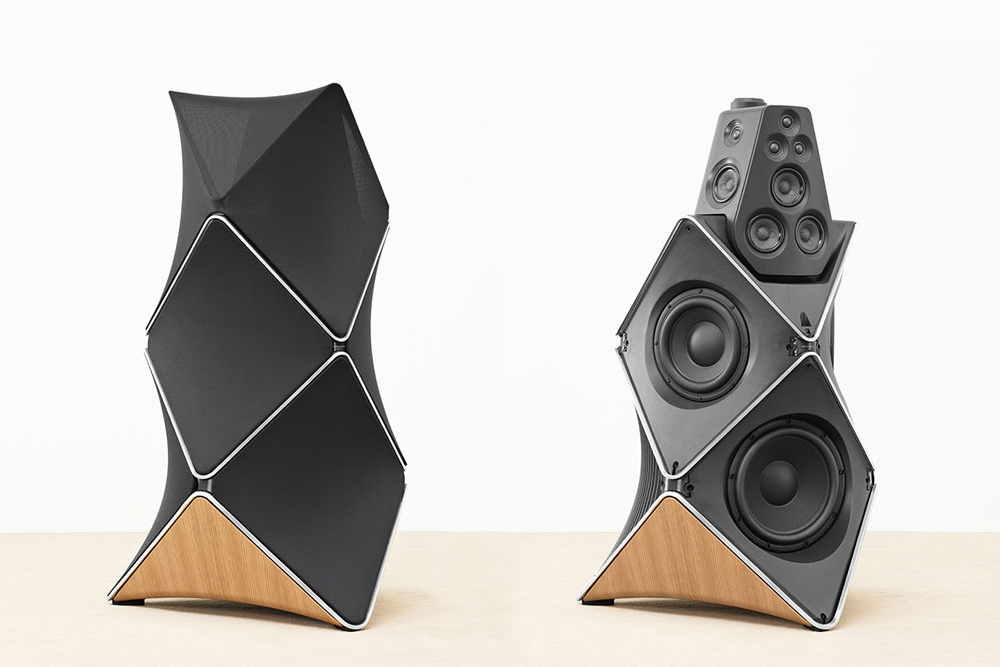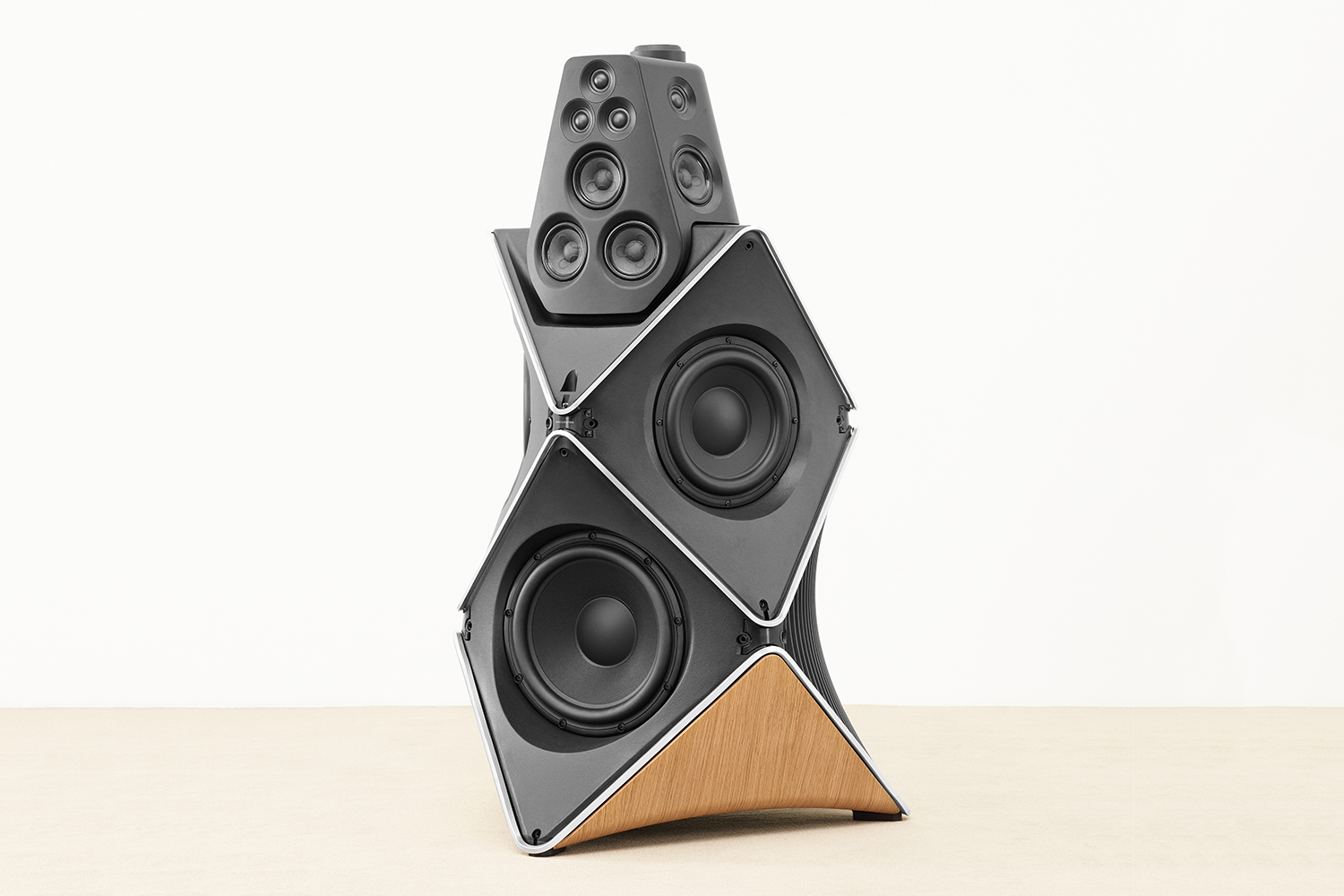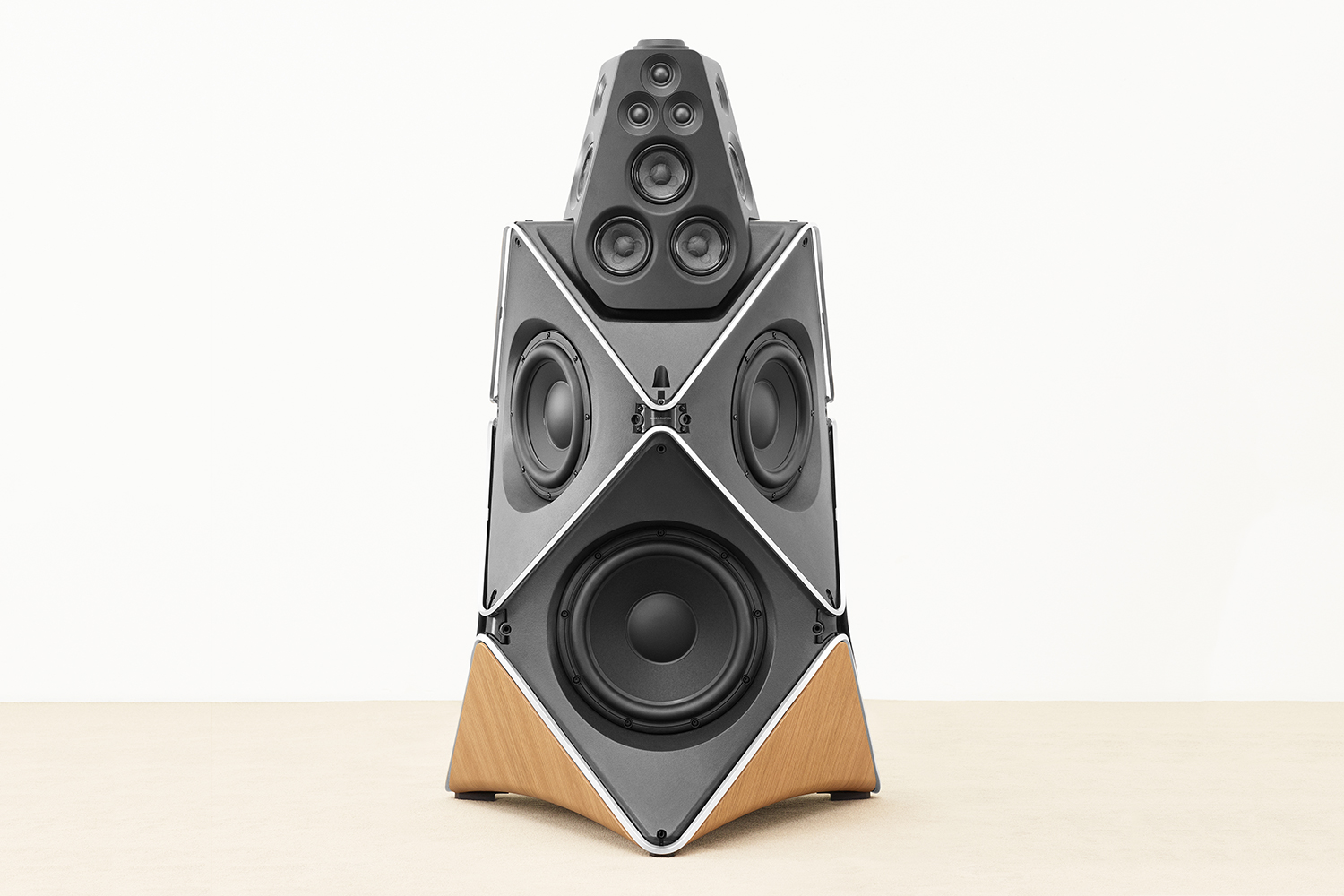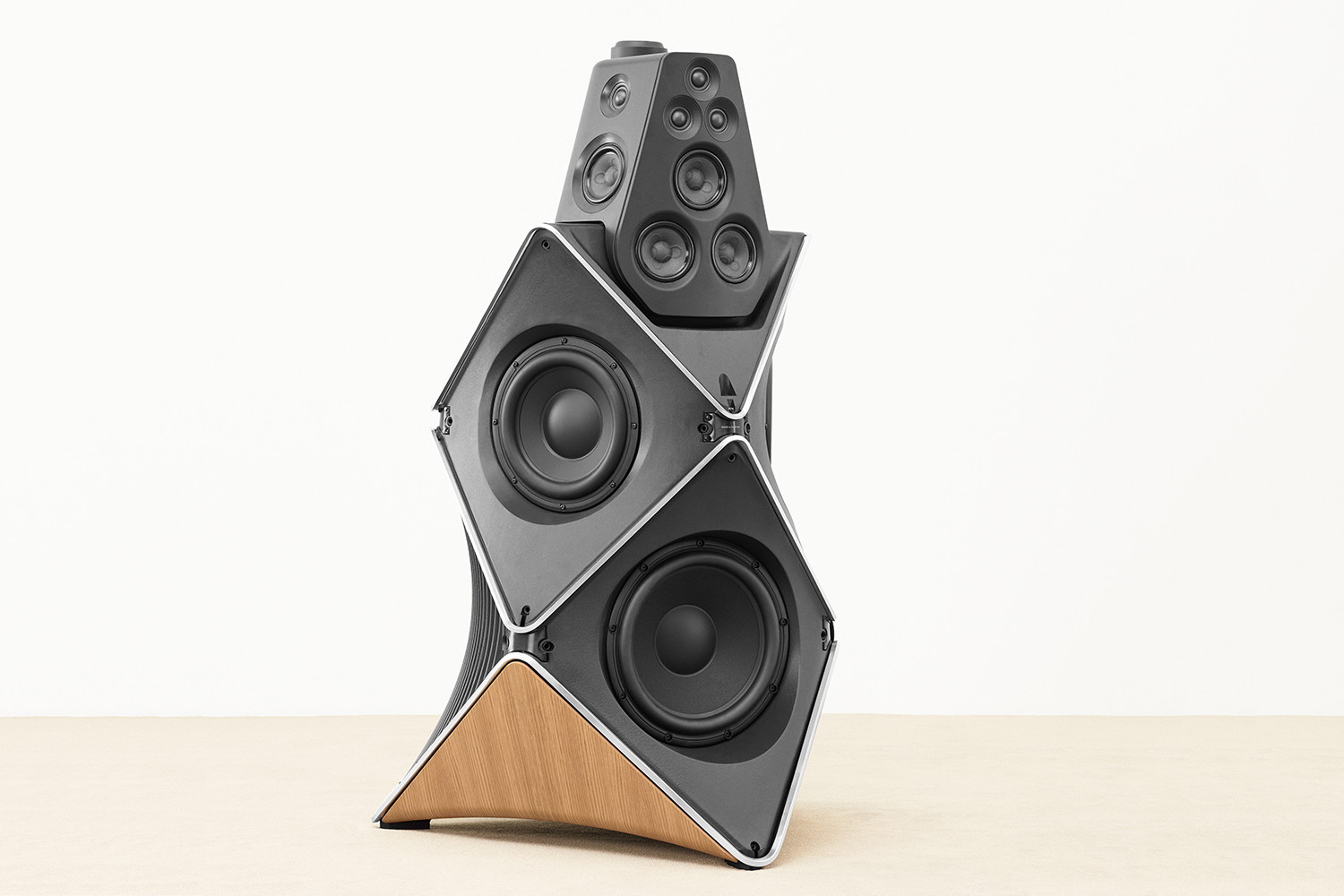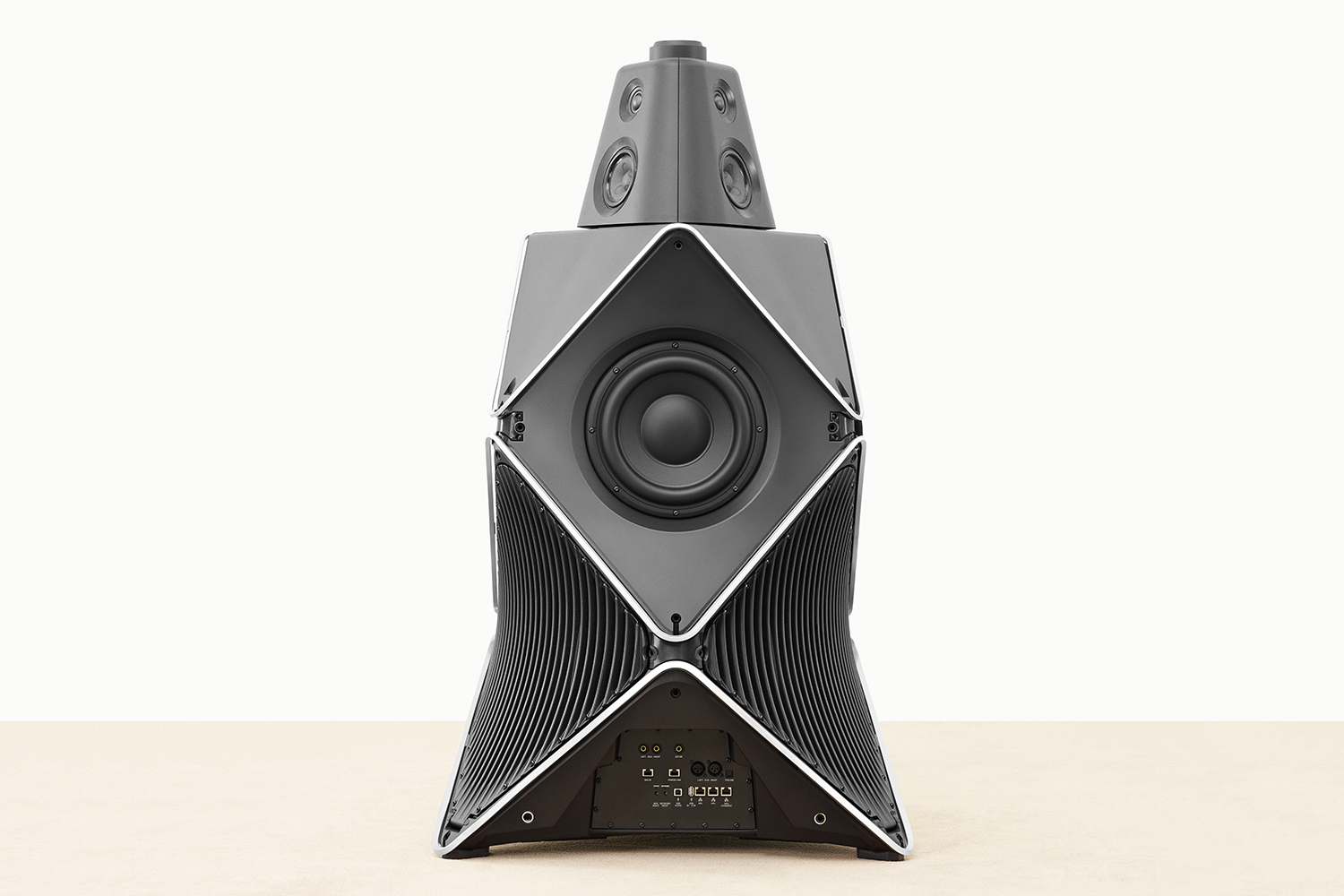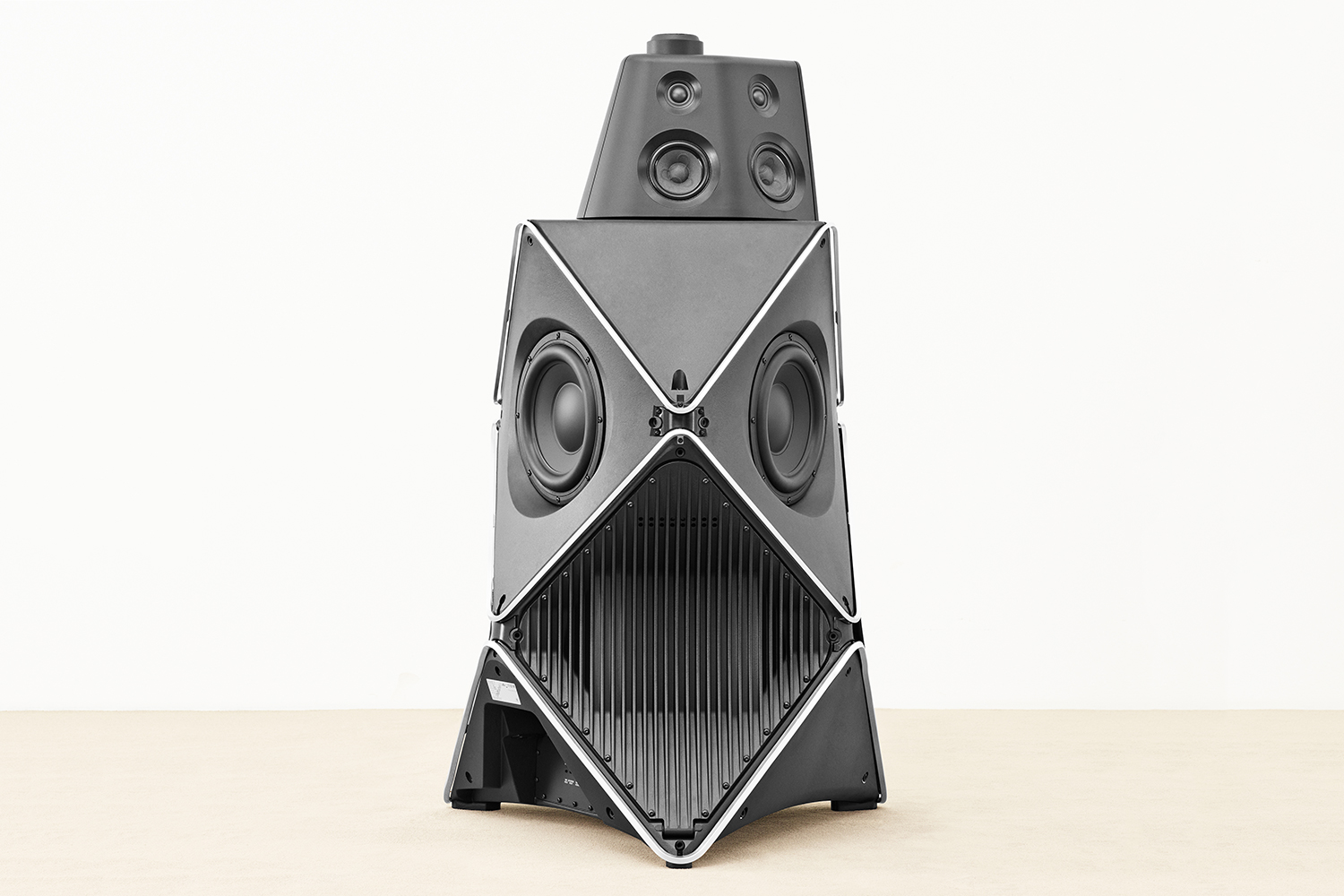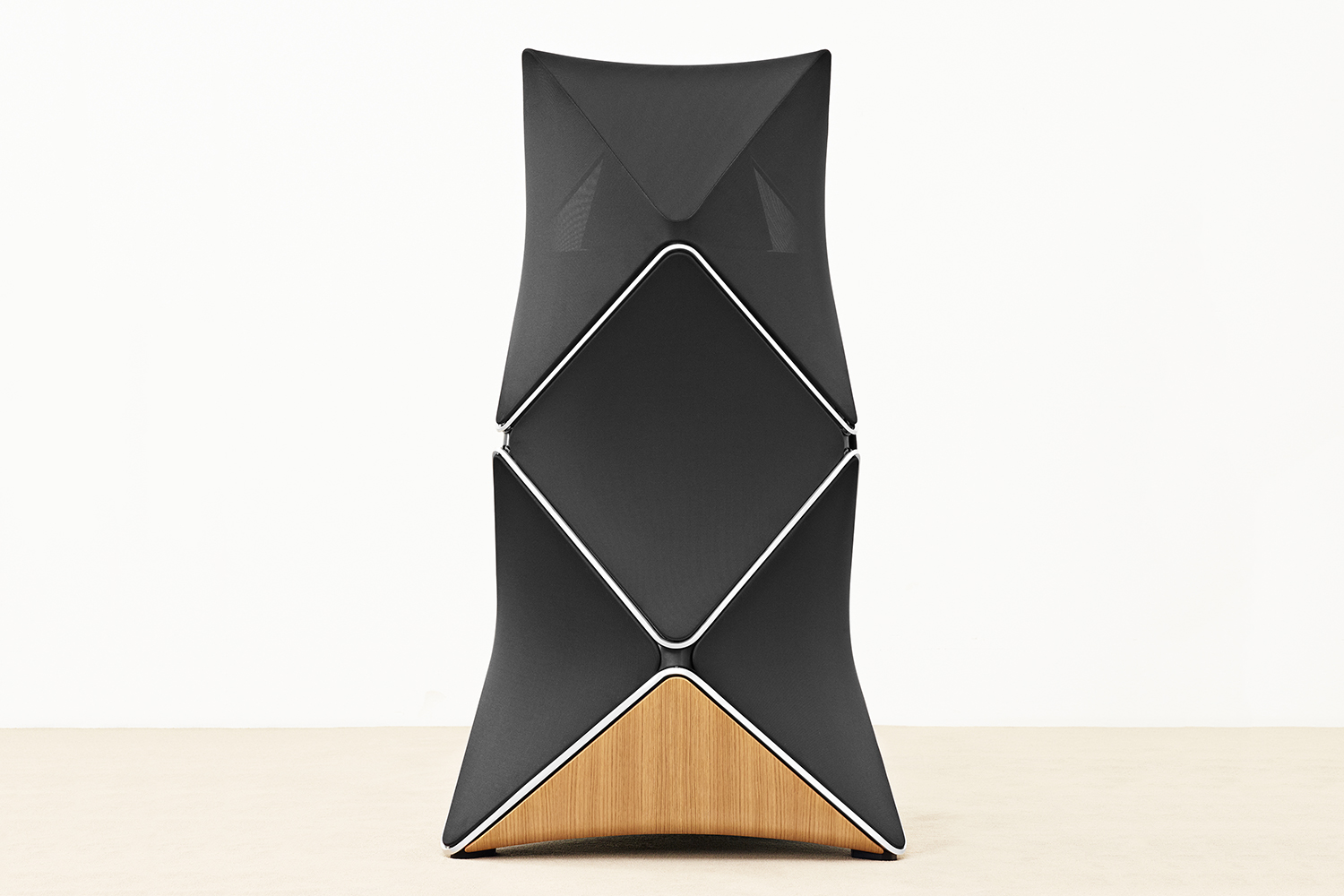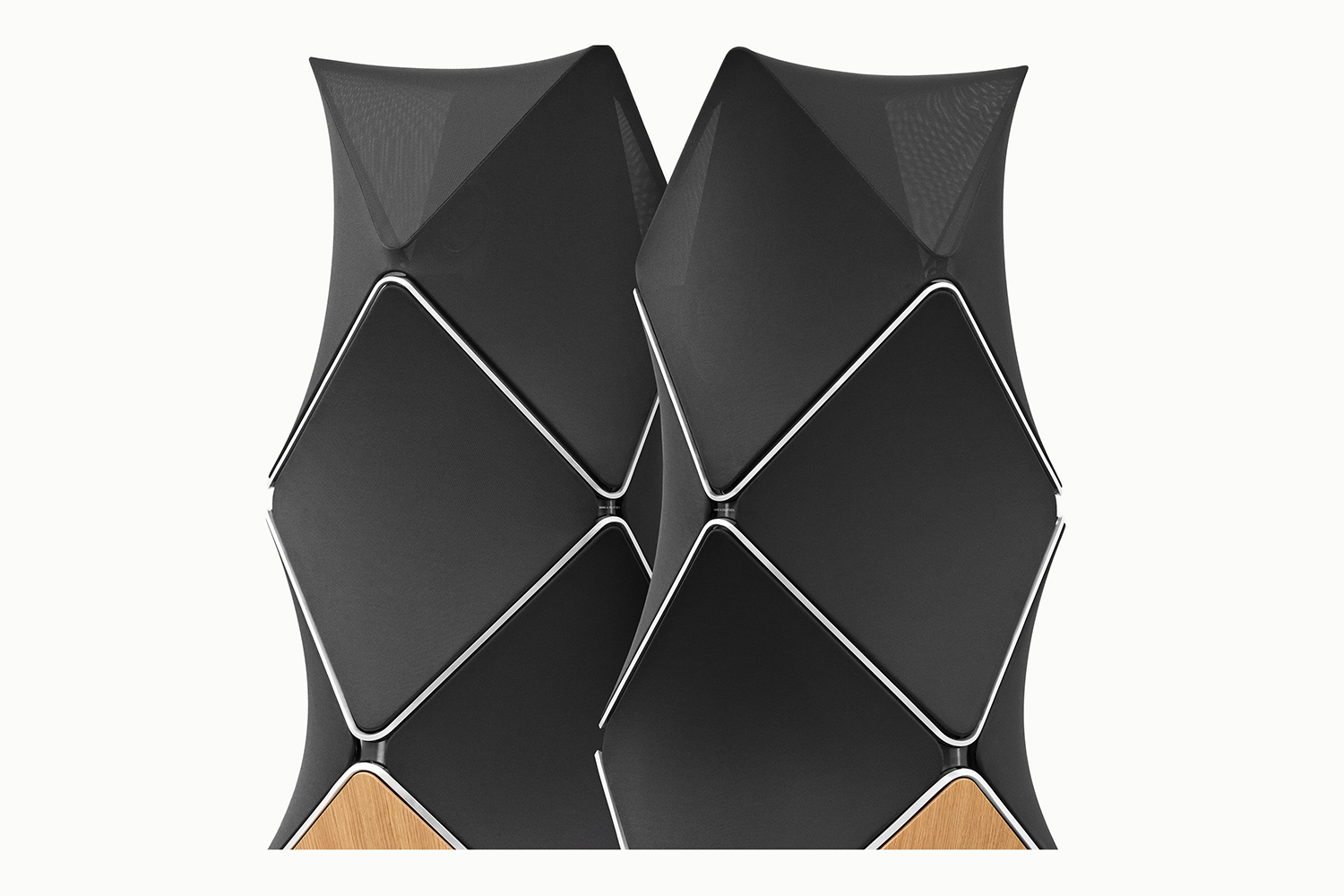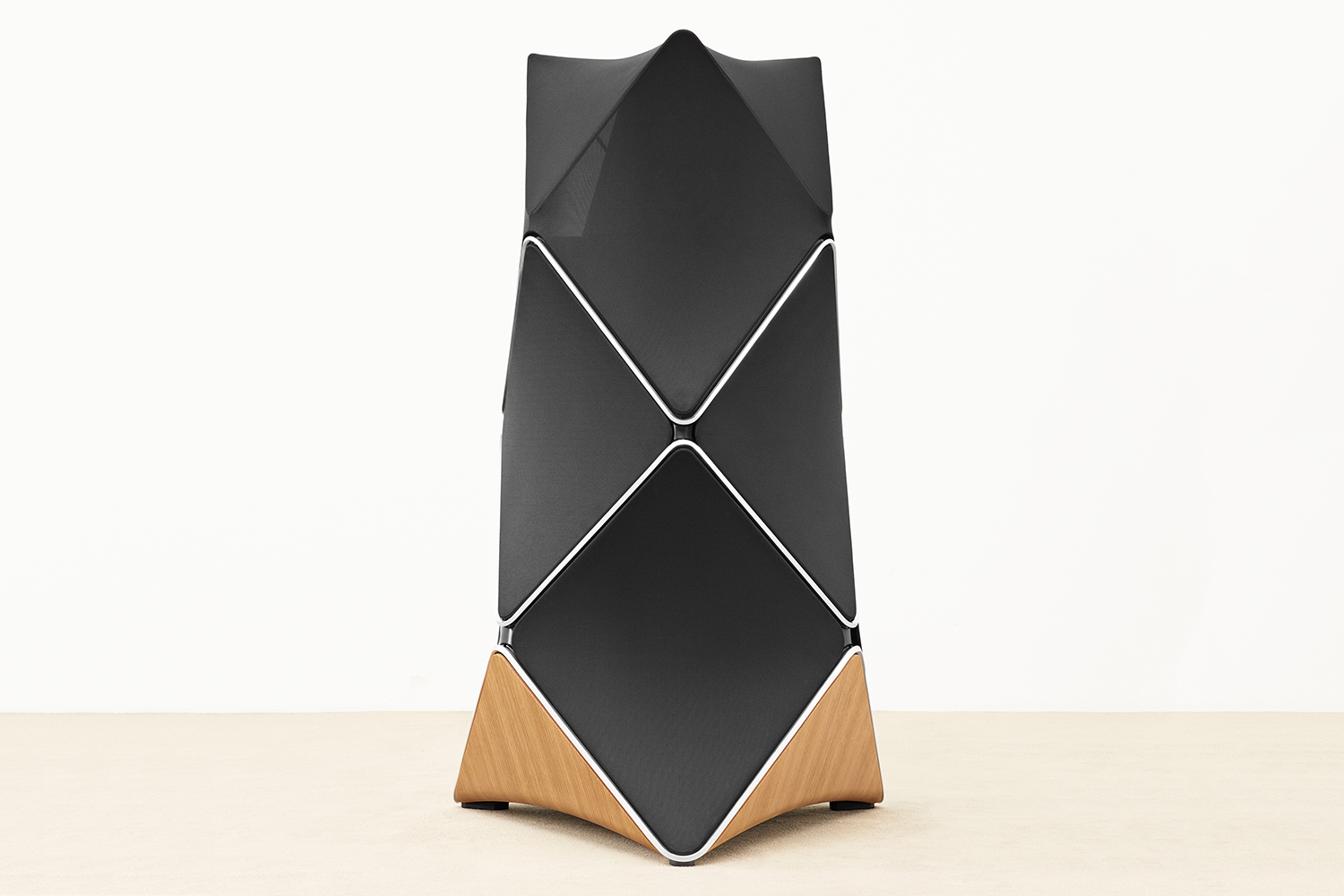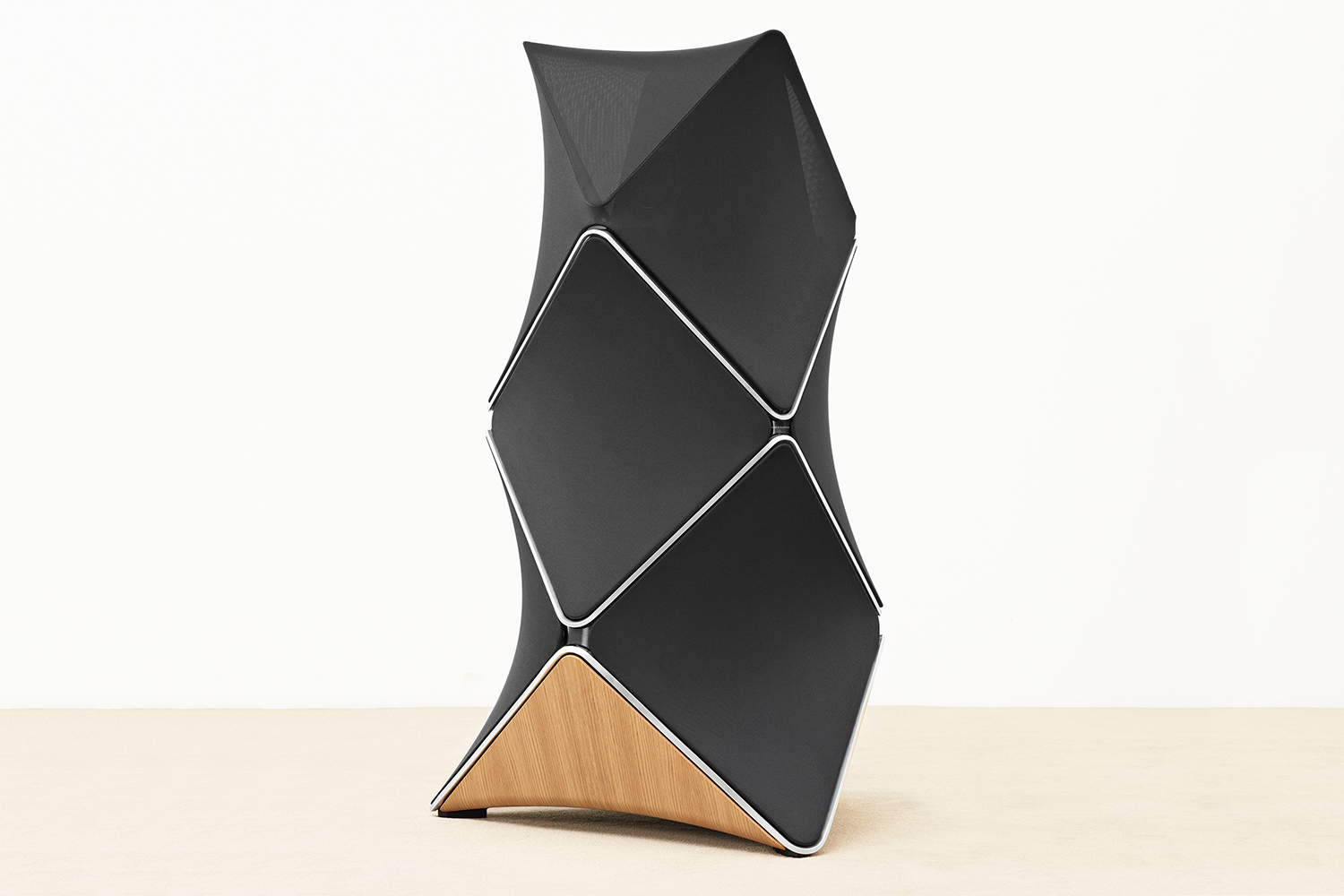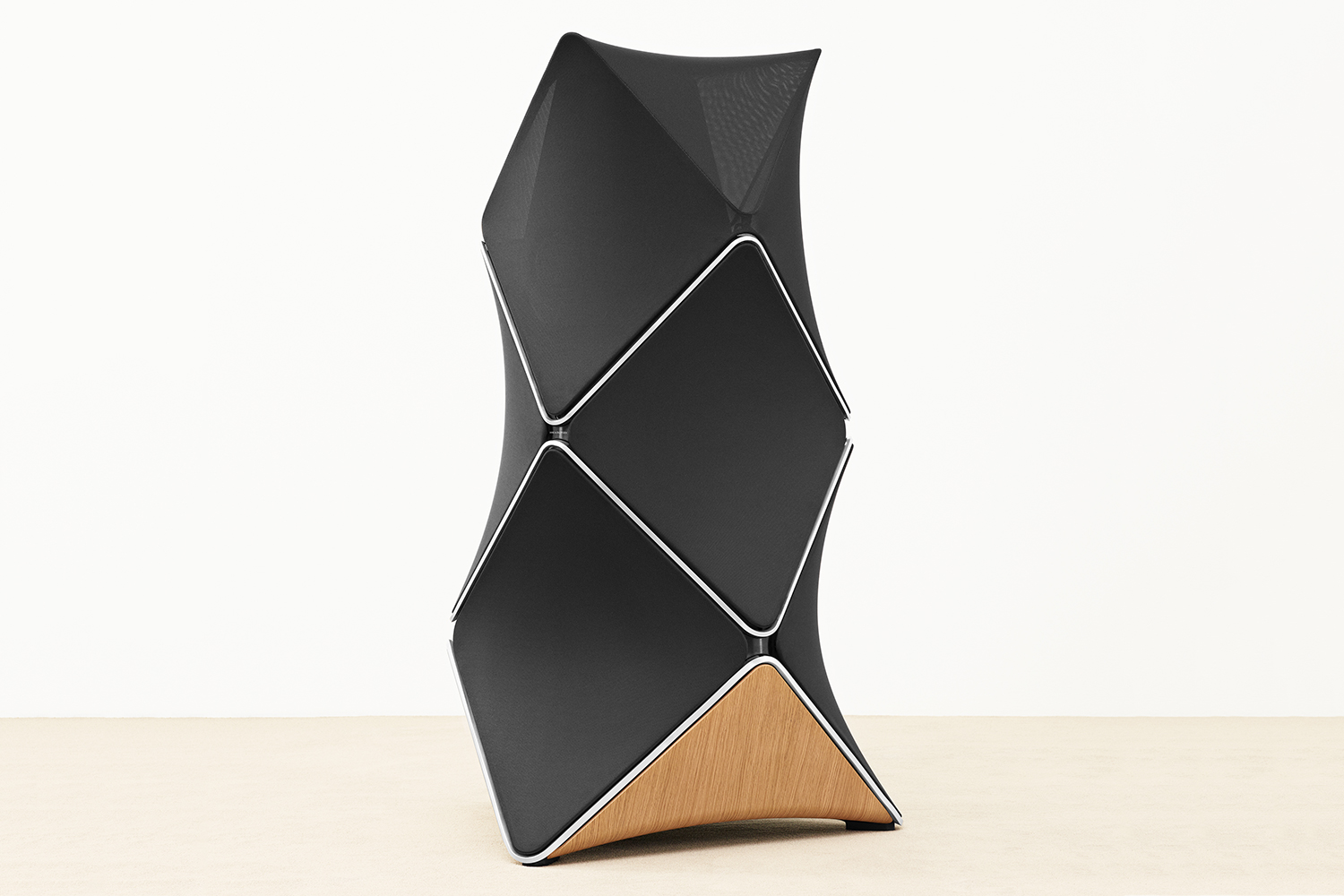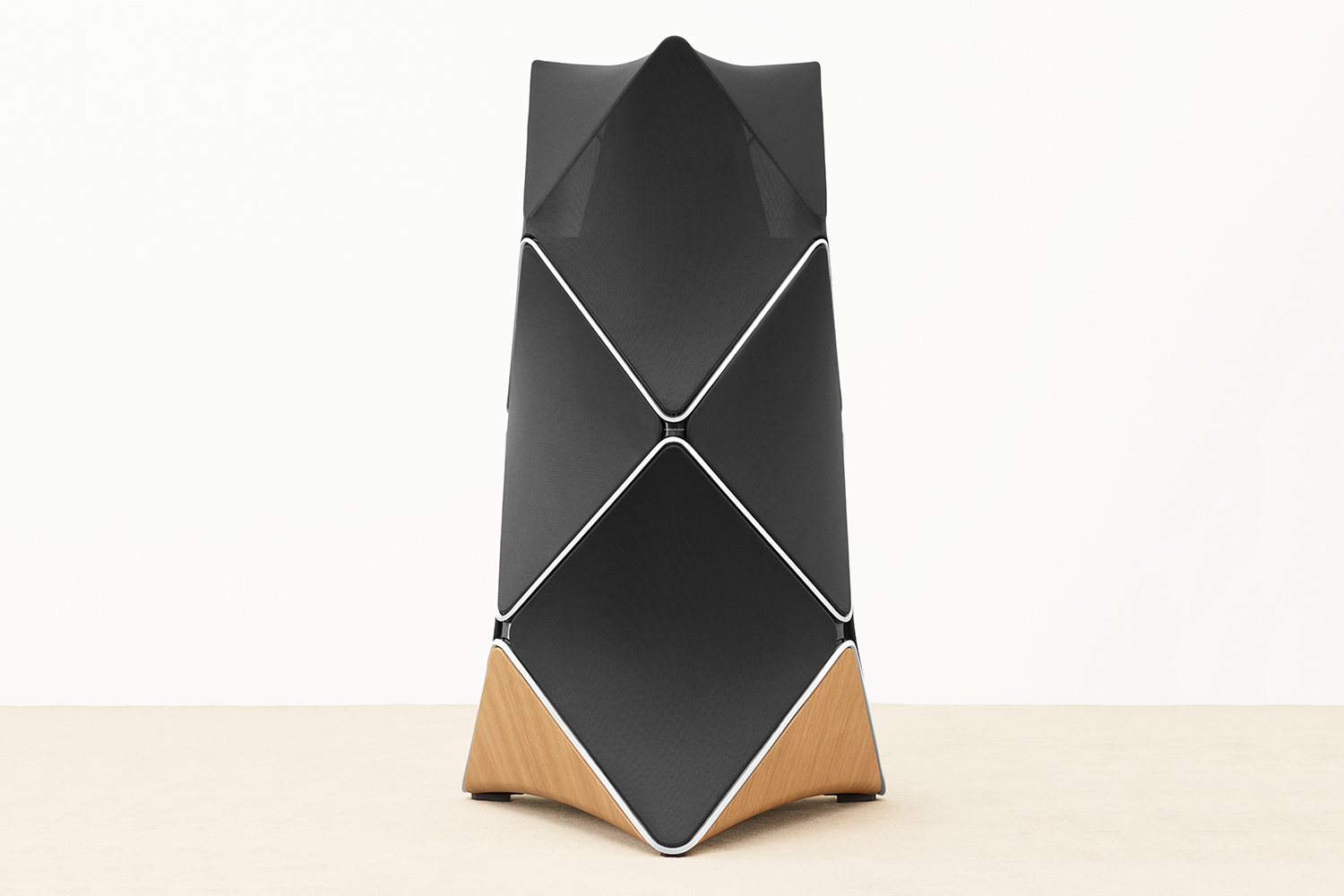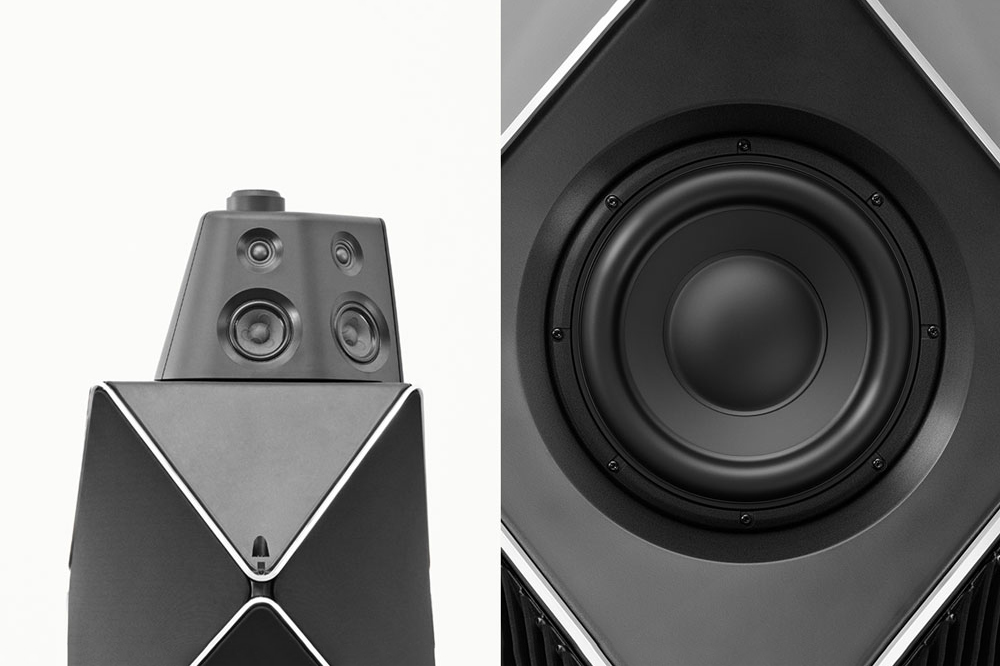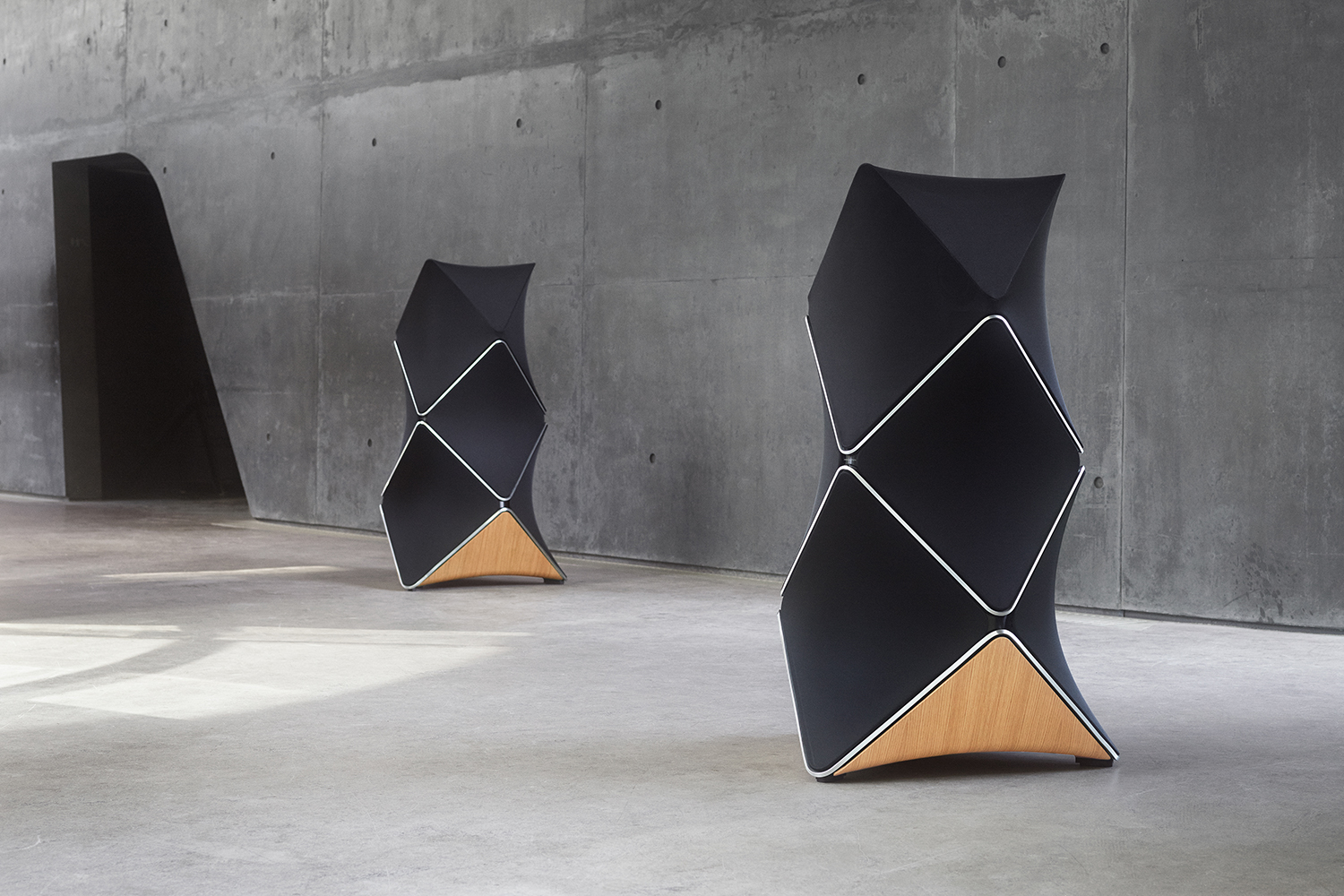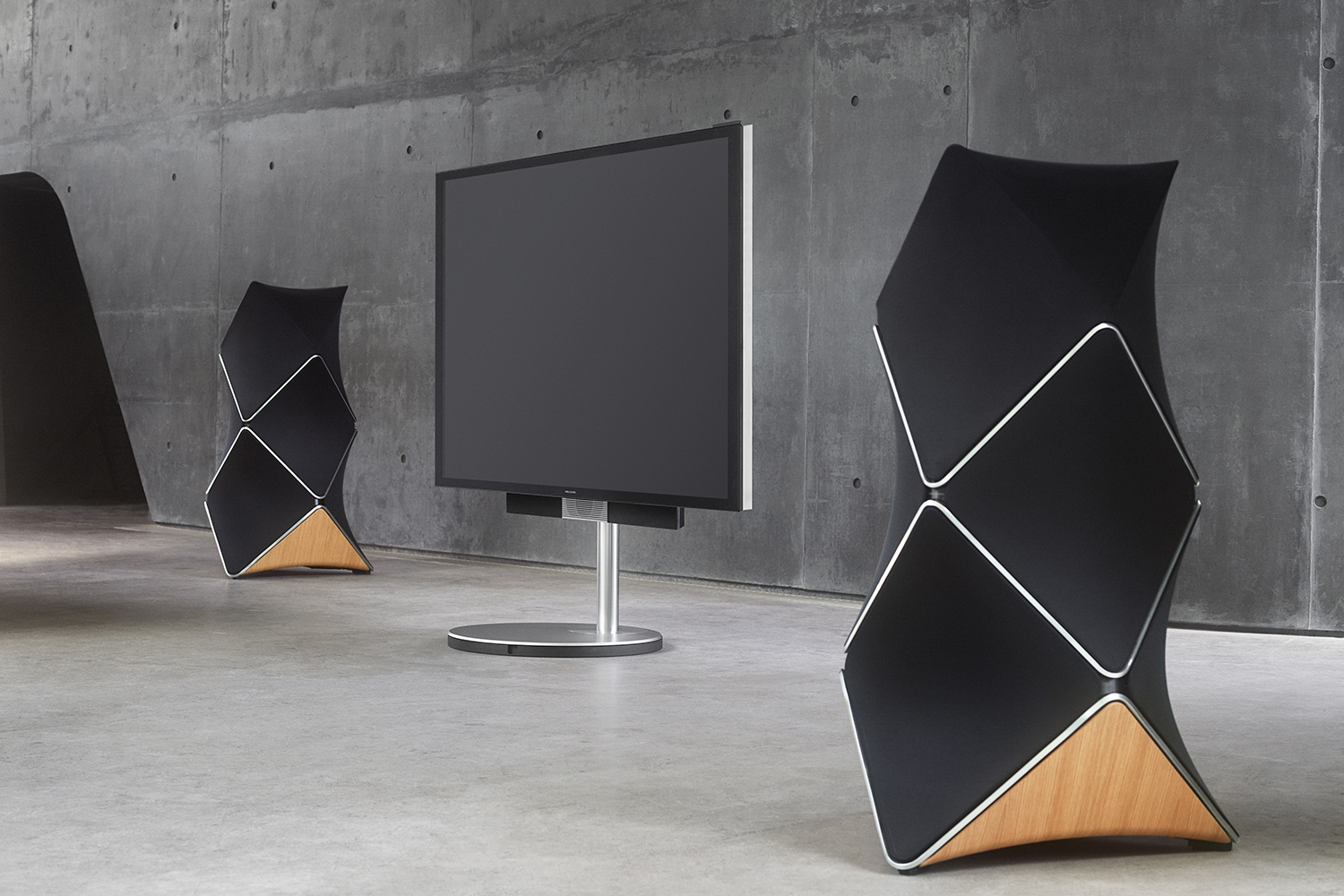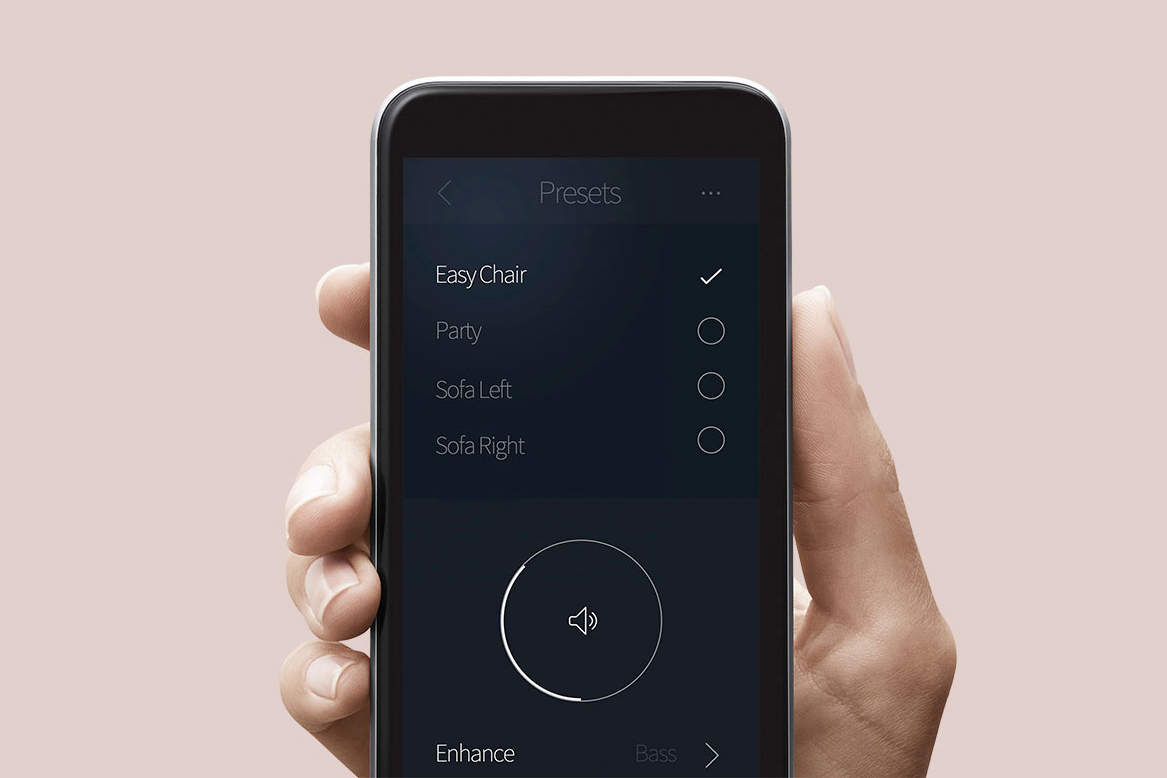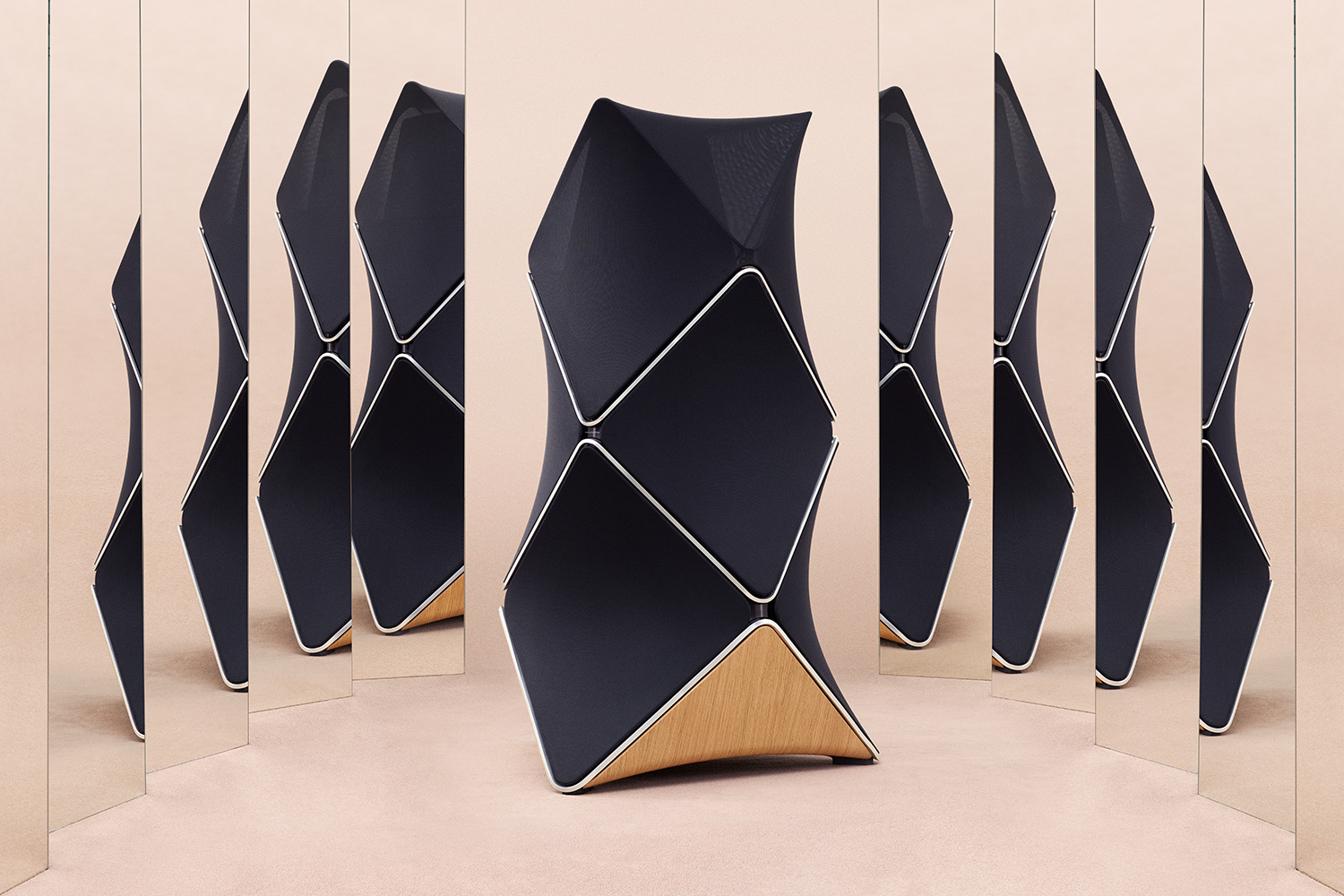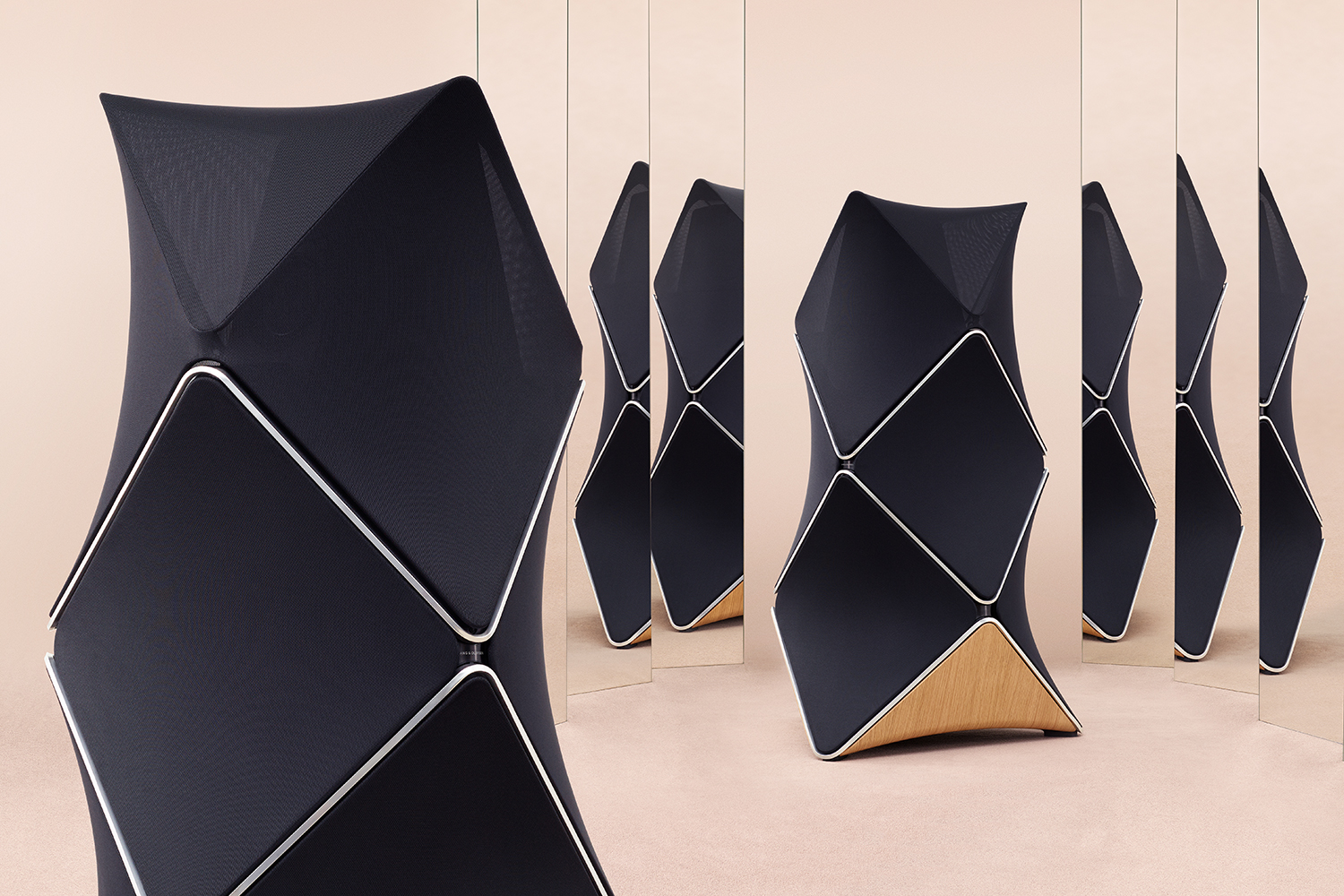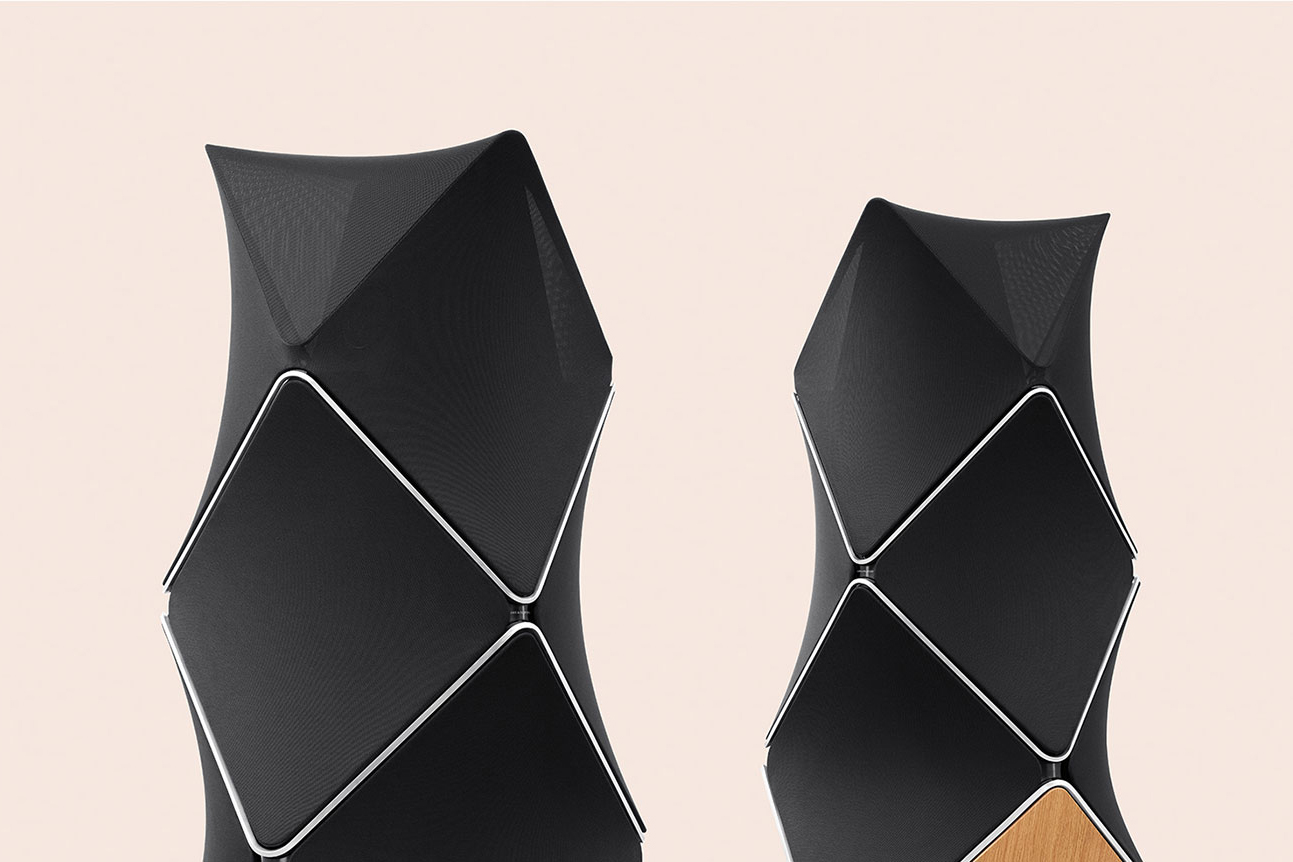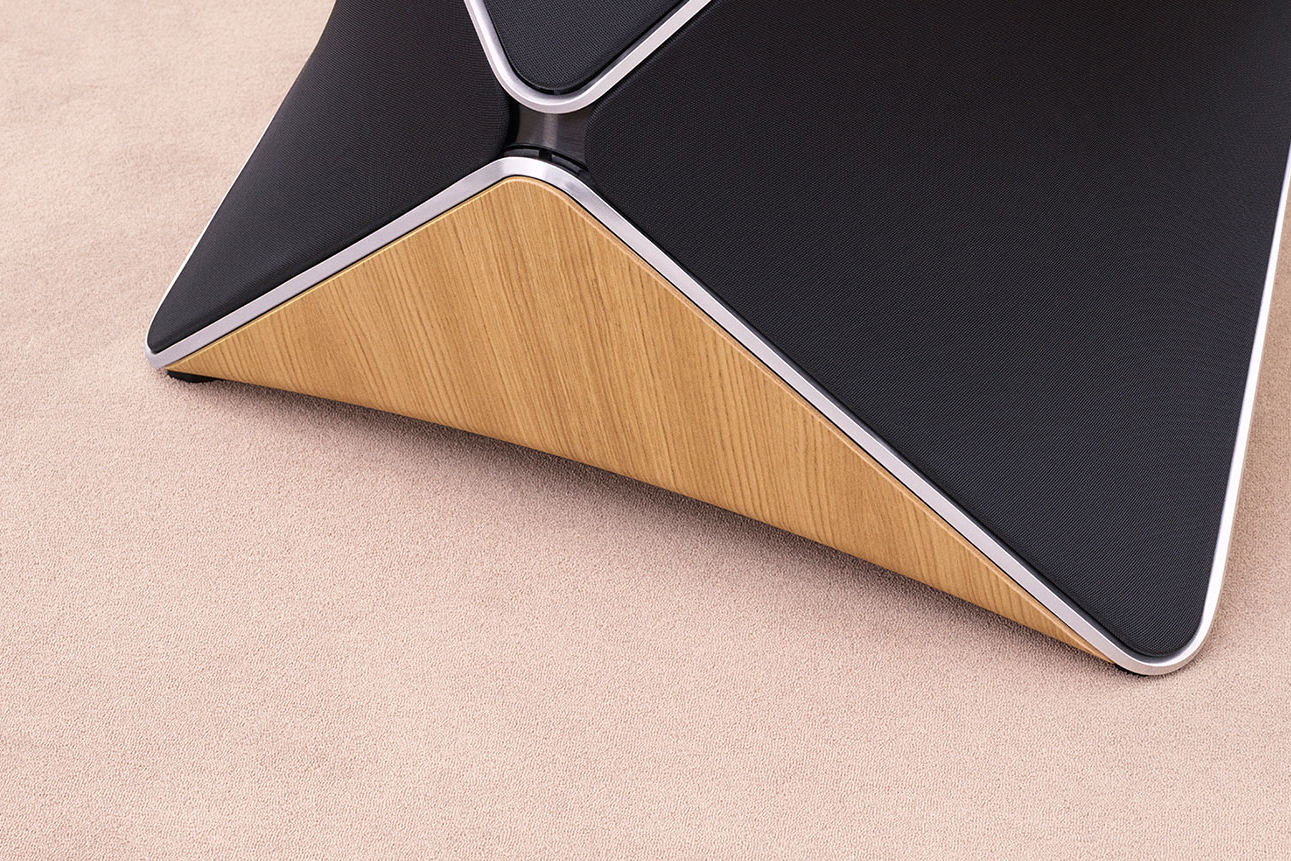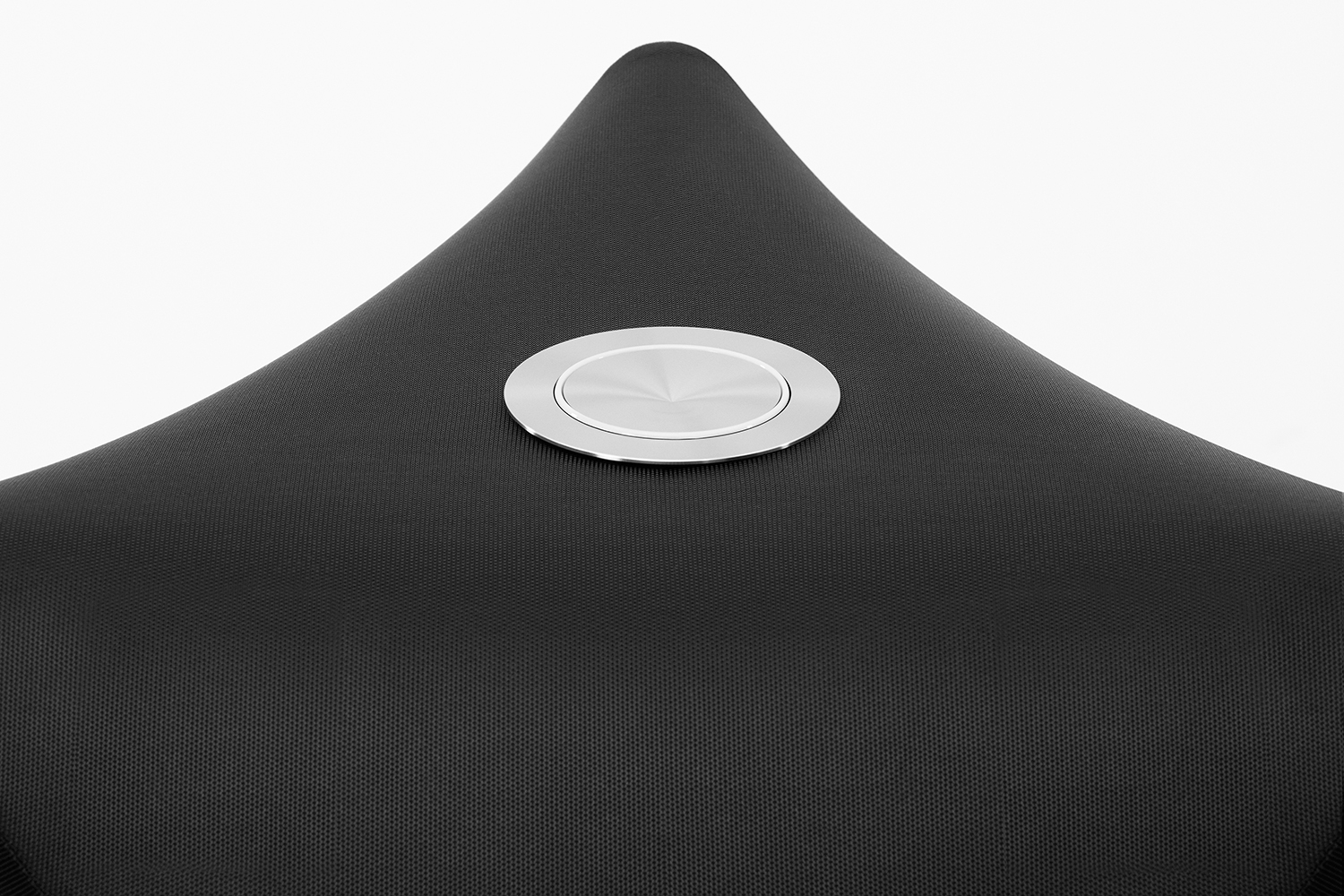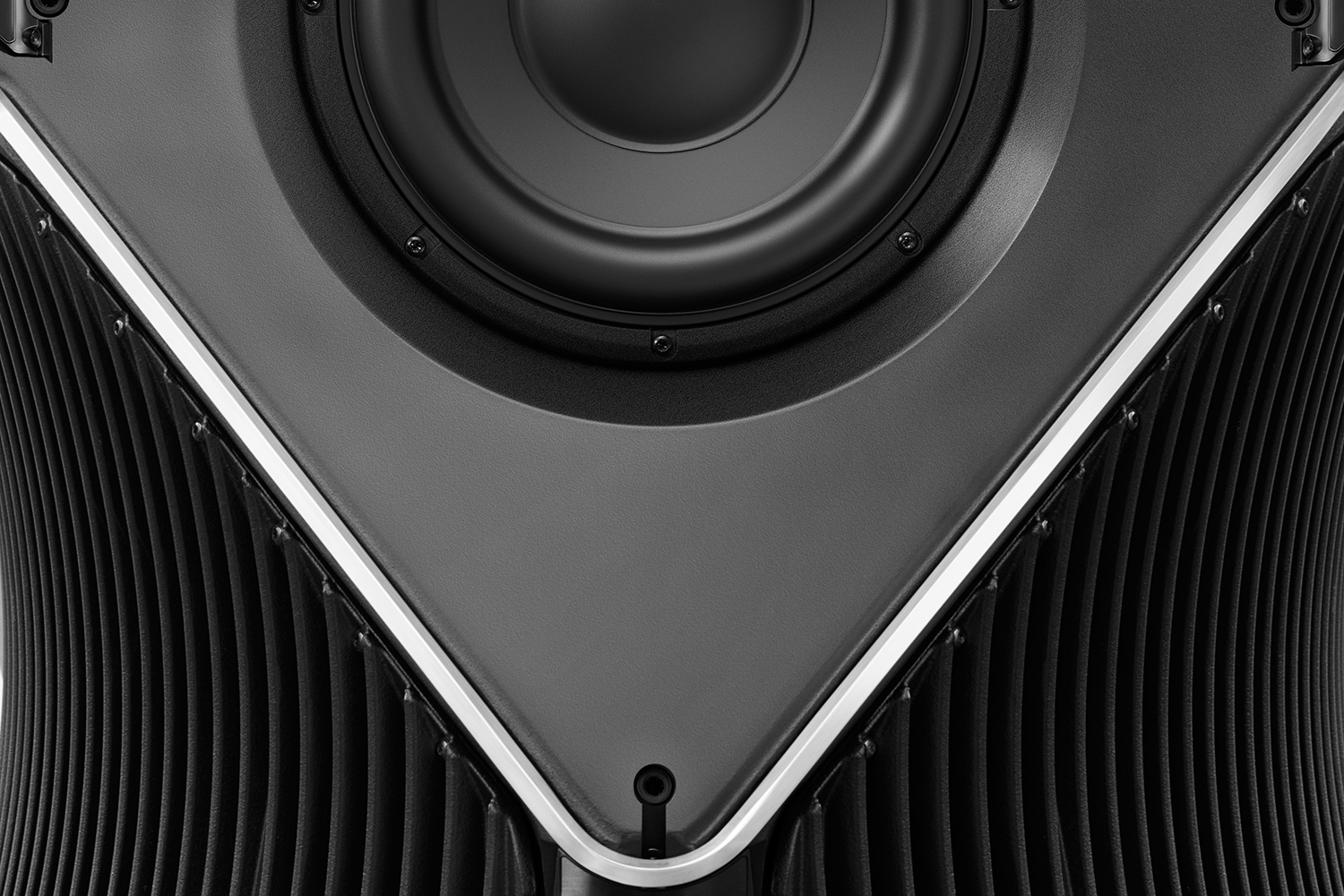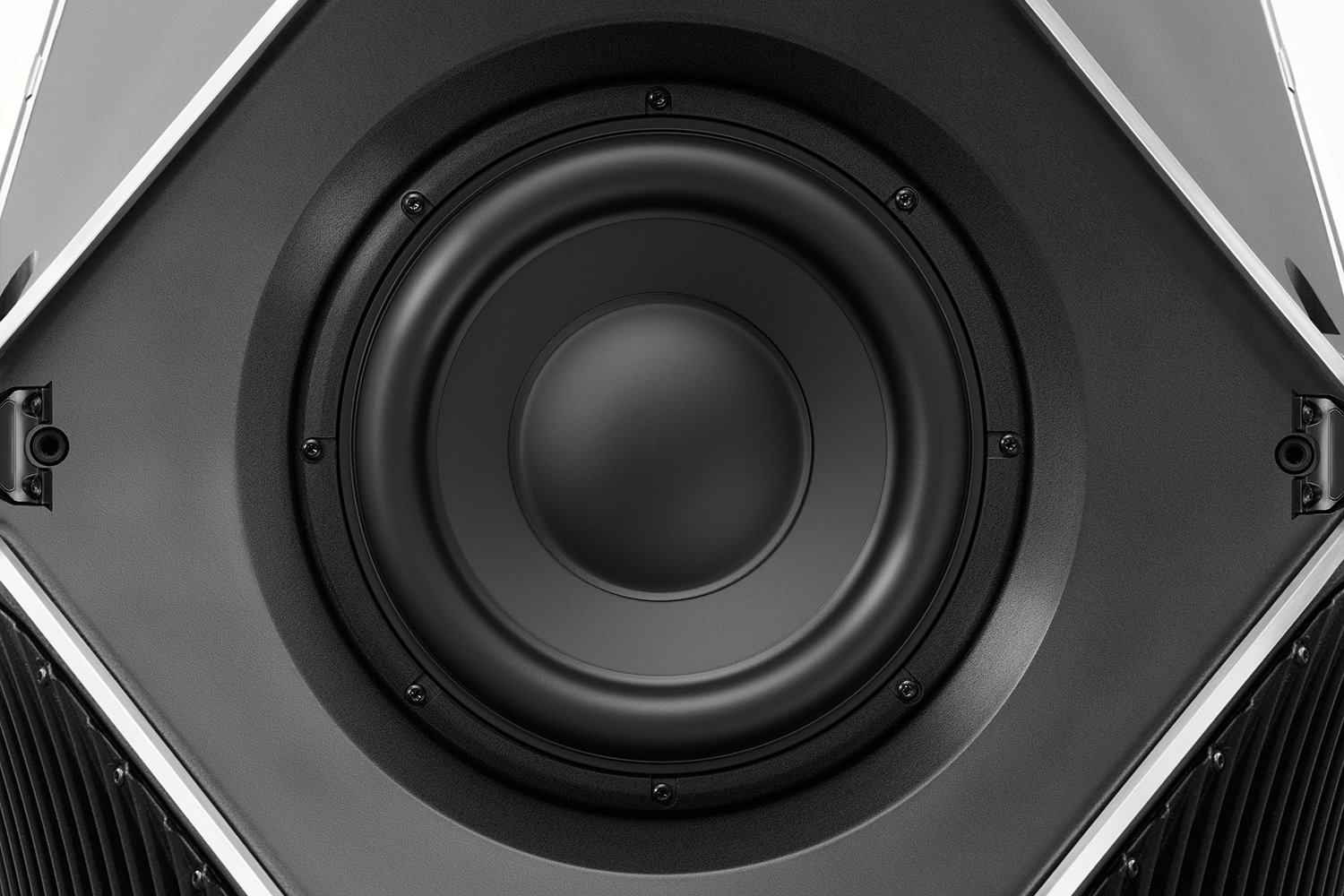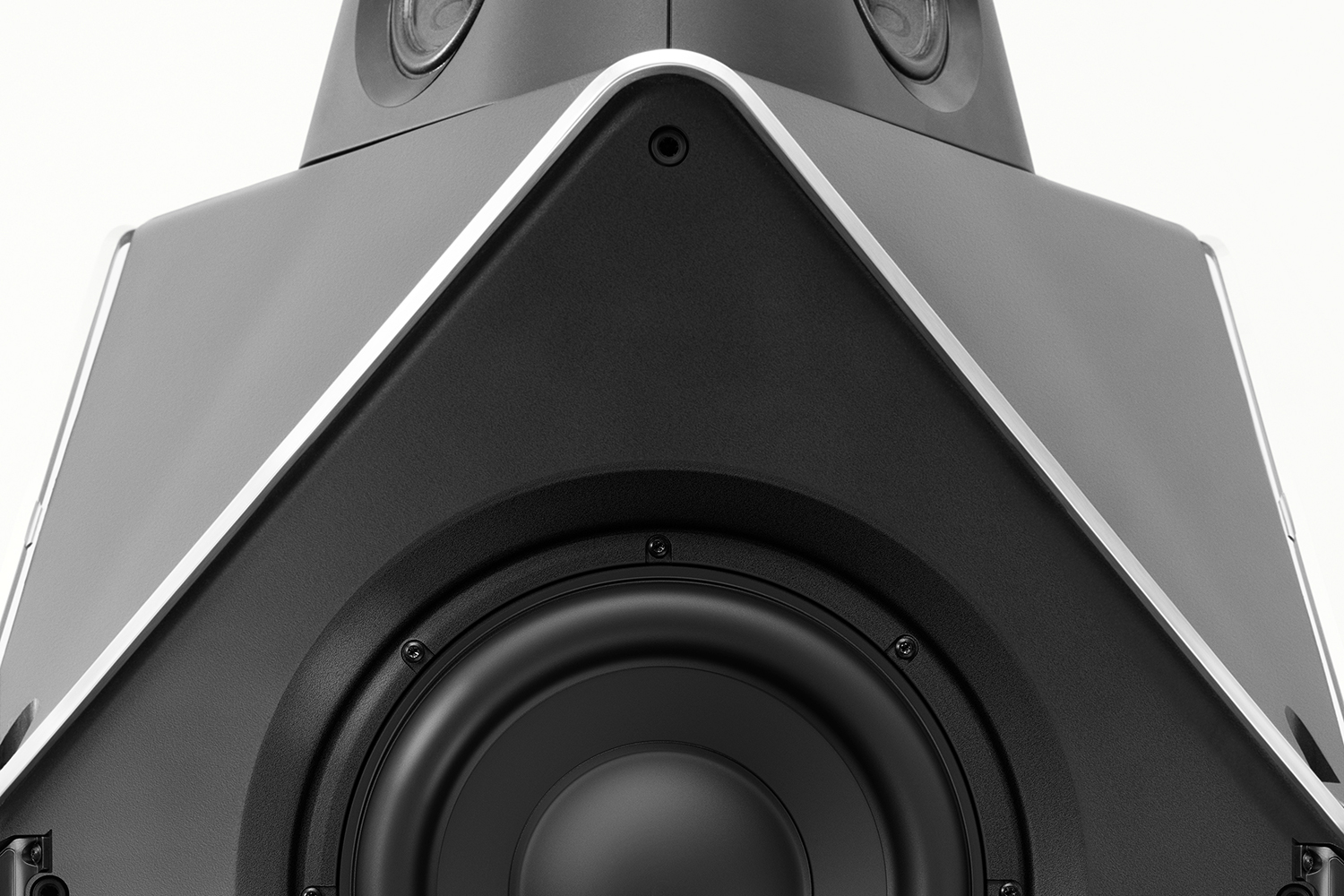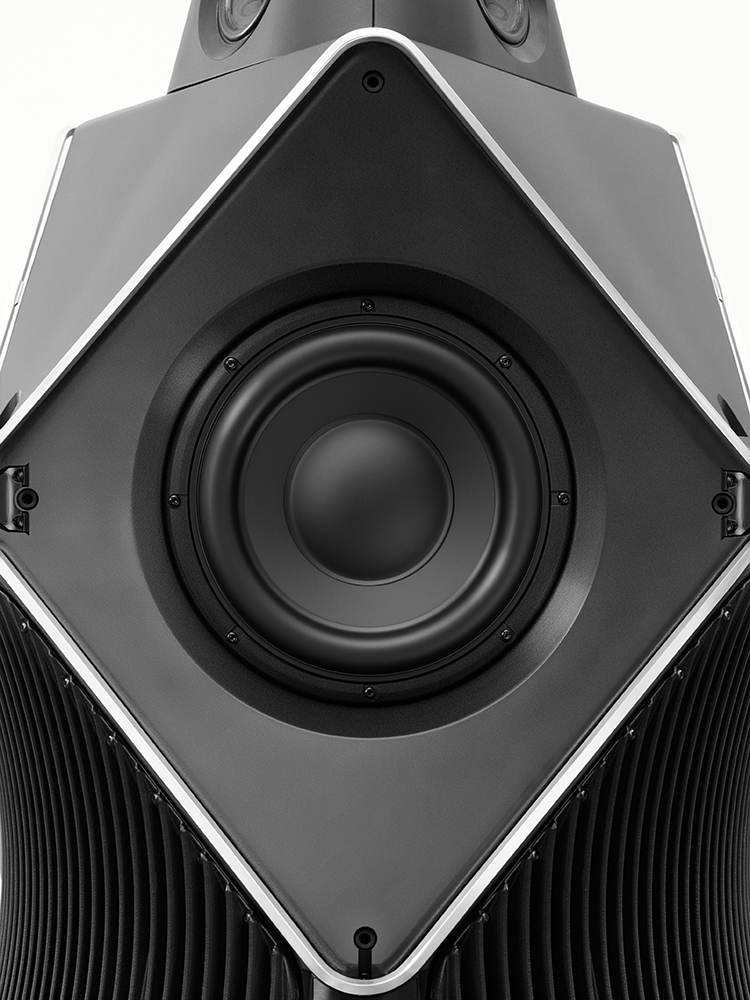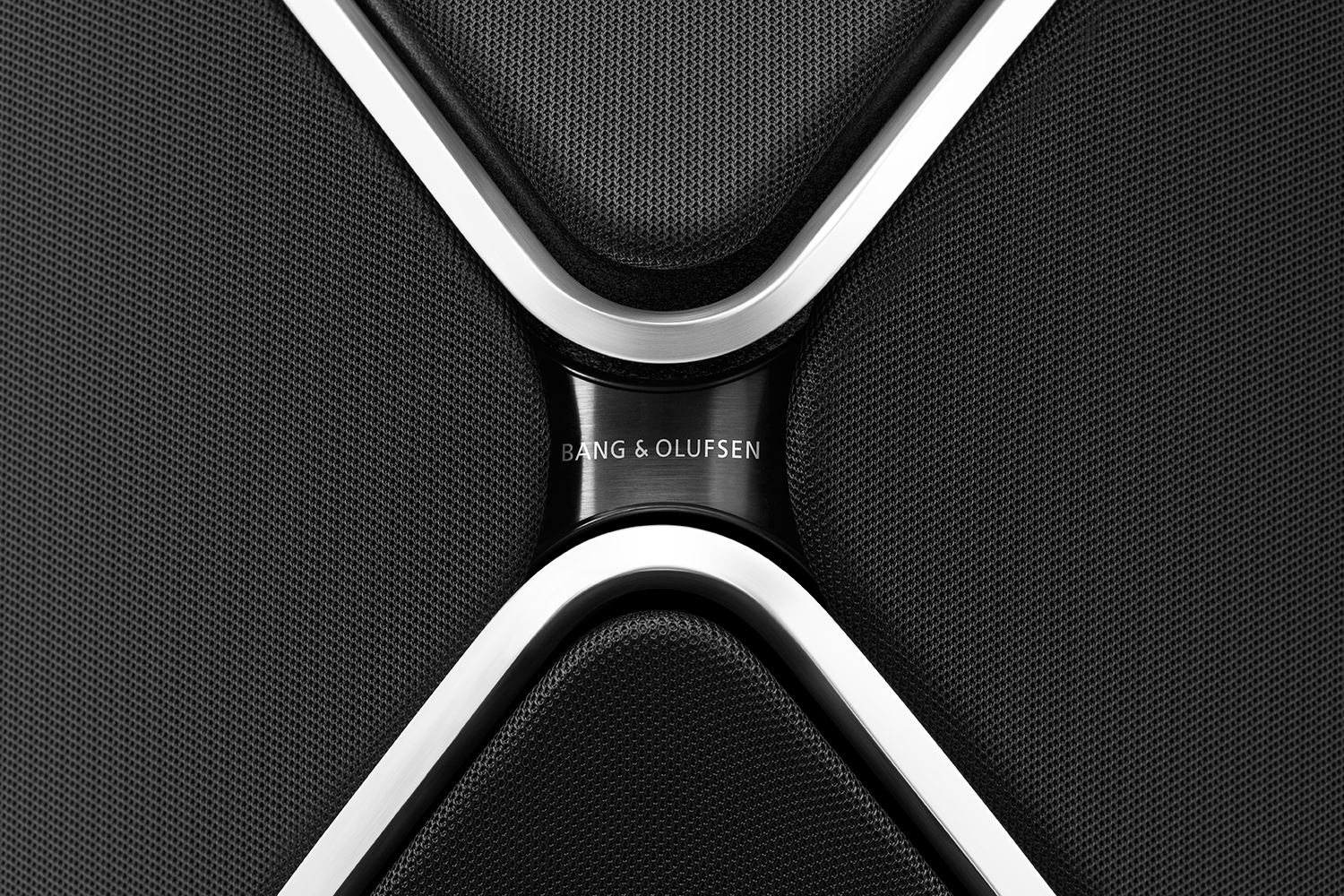“We’ll believe it when we hear it,” we said.
Now we believe it.
Bang & Olufsen’s space at CES has always been a reliably enjoyable place to spend some time away from the hustle and bustle of the intense Vegas crowds, but this year our visit wasn’t just relaxing and refreshing, it was awe-inspiring. If we seem a little excited in the video above, it’s because we genuinely are.
The system can also use its processing abilities to put the sweet spot at any place within the room.
You can tell just by looking that the Beolab 90 is a serious (and extremely ambitious) product. It’s covered in drivers mounted at all angles, facing in just about every direction in the room. What you can’t see is 18 total channels of digital amplification cranking out 8,200 watts, paired with one of the most advanced-sounding digital sound processors we’ve ever heard of.
The Beolab 90 is designed to take readings of a room using a special microphone — sort of similar to the way an A/V receiver’s auto-setup works — and employ what it knows about what happens to the sound in the room to make virtually anything you want happen. Perhaps the most impressive part of the processing is its ability to deal with reflected sound (sounds that come at you after they bounce off the walls, a leading cause of degraded fidelity). Rather than try to squash some of those sounds using equalization, Bang & Olufsen uses active noise cancellation to effectively eliminate the reflected sound where the listener sits. Think about that for a second. The speaker itself becomes an active noise-cancelling system so that the sound it does produce arrives at your ear in perfect purity. Amazing.
The system can also use its processing abilities to put the sweet spot at any place within the room. Let’s say your favorite chair is well left of center but you want to feel like the soundstage is right in front of you; the Beolab 90 system can achieve that for you.
When we sat down for a short audition, we were gobsmacked by what we were hearing. Though we were in the very back of the room with enough people blocking our sight of the speakers that we could barely see the system, we heard a perfectly balanced presentation with the vocals seemingly coming from directly in front of us, just 2 feet away (someone’s head was in that spot).
Aside from all of the sound balancing and noise-cancelling tricks, the systems balance throughout the frequency spectrum was truly impressive. The Beolab 90 is easily the finest-sounding speaker the company has ever made, and it’s extremely exciting to listen to. The bass … oh, the bass! We were treated to deeeep, extended bass with tons of punch and iron-fisted control. The rest of the speakers’ response was also remarkably realistic.
The only problem with the Beolab 90, as we see it, is that most folks may never get to hear them. Presently, only a limited run of the speakers is planned, and demonstration units will only be sent to an exclusive set of Bang & Olufsen retail shops around the world. If the B&O store near you happens to be one of those demonstration locations, we highly recommend you get yourself there for a listen.
Learn more about the Beolab 90 here.
